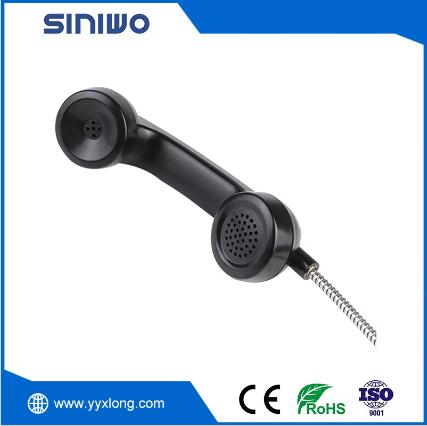The Role of Jail Telephone Handsets in Inmate Rehabilitation and Security
2024-08-21
In the correctional environment, communication is more than just a means to stay connected; it's a tool for rehabilitation and maintaining order within the facility. The Jail Telephone Handset is at the heart of this communication system, offering inmates the opportunity to maintain relationships with loved ones, seek legal counsel, and access support services. In this blog, we’ll delve into the dual role of the Jail Telephone Handset in supporting both rehabilitation and security in correctional facilities.
Supporting Inmate Rehabilitation
Maintaining contact with family and friends is crucial for the mental and emotional well-being of inmates. Studies have shown that inmates who maintain strong family ties are less likely to re-offend upon release. The Jail Telephone Handset facilitates these connections, allowing inmates to:
- Stay in Touch with Family: Regular communication with family members helps inmates stay connected to their lives outside of prison, providing emotional support and a sense of normalcy.
- Access Legal Support: Inmates can use the telephone system to communicate with their legal representatives, ensuring they have the support they need to navigate the legal system.
- Participate in Counseling and Support Programs: Many correctional facilities offer phone-based counseling or support services, which can be accessed via the jail telephone system.
Enhancing Facility Security
While the primary function of the Jail Telephone Handset is to facilitate communication, it also plays a critical role in maintaining security within the facility. Security features integrated into the handset and the broader telephone system help prevent misuse and ensure that communication does not compromise the safety of the facility. Key security measures include:
- Call Monitoring and Recording: Correctional facilities often monitor and record inmate calls to prevent illegal activities, such as planning escapes or coordinating criminal activity from within the facility.
- Restricted Access: The system can be programmed to restrict calling to certain numbers, such as pre-approved family members or legal representatives. This prevents inmates from contacting individuals who may pose a security risk.
- Tamper-Proof Design: The Jail Telephone Handset is designed to be tamper-resistant, preventing inmates from modifying or damaging the device.
Balancing Rehabilitation and Security
The challenge for correctional facilities is to balance the need for security with the benefits of inmate communication. The Jail Telephone Handset is designed to meet this challenge, providing a secure means of communication that supports inmate rehabilitation. By allowing controlled access to phone calls, facilities can help inmates maintain vital connections while ensuring that security protocols are upheld.
Conclusion
The Jail Telephone Handset is more than just a communication device; it is a vital tool in the rehabilitation process and a key component of facility security. By offering inmates a secure and reliable way to stay connected with the outside world, these handsets support the dual goals of rehabilitation and maintaining order within the correctional environment. As technology continues to evolve, so too will the features and capabilities of jail telephone systems, further enhancing their role in modern correctional facilities.



